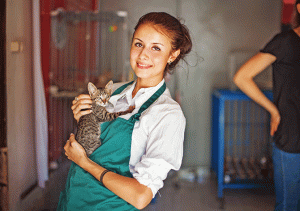Fostering an animal is an incredibly rewarding experience. You could be the bridge that gets a pet from a place of danger to a place of safety, comfort, and family. It involves quite literally saving the life of an animal and having them become someone’s beloved family pet.
It’s not a responsibility to be taken lightly, however. Fostering an animal is a lot of work and takes an incredible amount of dedication. This is Part 1 of a series exploring what it takes to be a pet foster carer. This first post will explore whether being a foster carer is right for you.
Where do foster animals come from?
Before we begin, you should be aware of where foster pets come from. These are animals that, for the time being, have no permanent home for a variety of reasons. These animals sometimes come from terrible situations that may involve abandonment, abuse, or simply that a family’s personal circumstances have changed and they can no longer keep the pet. Because of their difficult histories, the behaviour and health of these pets may be affected, and they could be unconfident or distrustful of human beings.
Monika of Monika’s Dog Rescue explains that “When a dog comes into rescue they are bewildered and frightened. Eventually, they respond to the kindness of our helpers and start to feel safer…I have seen first hand the miracles that occur when a dog moves into a foster home. They start to relax and play; their health improves; they start to feel happy; their personalities emerge.
Am I mentally a right fit?
It takes a special kind of person to foster an animal. Perhaps the most important attribute of being a foster carer is patience. Yvette Phillips of Hunter Animal Rescue stresses this point, saying she believes the most important aspect of being a foster carer is patience. "We have animals that have to come to us, sometimes with horrible pasts or behavioural issues, and we need to ensure that they feel safe and loved while being rehabilitated". Most of the animals going into care are coming from terrible circumstances that have left them emotionally as well as physically scarred. A foster carer must take it upon themselves to nurture, train, and build up confidence in an animal that may have been severely damaged in the past. This takes time, energy, and – yes – patience.
Foster carers need to also be flexible and confident in their abilities to care for these animals. There’s no telling where these animals may be coming from, so a foster carer will need to have knowledge of all sorts of animal behaviours and training methods.
Resilience is also a must. When working with these animals, with all the successes they may earn, there will also be times when things don’t work out or a health issue may be too much. These instances are heartbreaking and sad, but a foster carer should be able to just resolve to help the next animal to come their way.
The fact is that foster carers are there to help animals for a temporary period. That means that you may get attached to an animal in your care, but they should hopefully move on to be with their forever family. While foster carers will undoubtedly feel sad when an animal moves on, they must also look at the bright side that the animal will be happy and cared for. That’s something that may not have been possible without the foster’s help.
What kind of experience do I need?
First and foremost, if you want to be a foster carer you should have experience with animals. As mentioned, there will be different animals from all different walks of life, and it’s up to the foster carer to work with that animal to provide the best care possible, along with dealing with any behavioural issues. This means having knowledge that can only come with experience. The foster coordinator and rescue agency can give tips and advice, but a potential foster carer should have a baseline of experience from which to draw.
Foster requirements
Rescue agencies differ in what they require to be a foster carer, but the basics are universal. You should live in a well-looked after home that can safely house the animal. You should also be able to separate the foster animal from any permanent pets you might have, if the need arises. You may also be required to have a certain height of fence, depending on the type of animal and your home’s layout.
You will have to sign application forms and may have to provide references from your current veterinarian or employer, as well as written permission from your landlord if you’re renting a home. If your application is successful, you’ll be required to attend training that will give you the basic skills of being a foster carer. A foster coordinator may also visit your home to make sure that it’s suitable. A meet-and-greet between the potential foster animal and your family and pets may also be required to make sure that there aren’t any major problems, and to familiarise the animal with you before it comes to stay.
For more details on the specifics of each agency, you can see a great list of our wonderful foster partners on this page.Fostering an animal in need can fill your heart, break it, and then fill it up again. It’s a rewarding experience that will take love, affection, empathy, and a lot of patience. If you’re up to the challenge, it’s definitely worth it.







Leave A Comment